Andrew Smith says it doesn’t all have to be hard work – there are several tips and shortcuts you can use to improve your archery while making the most of your shooting time
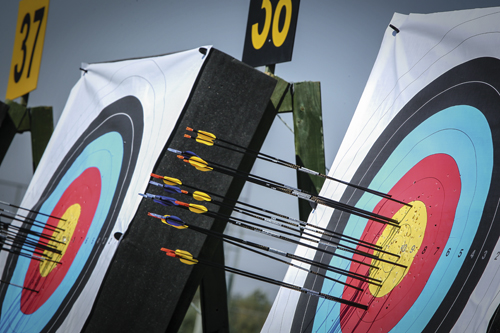
Whether you want to advance your handicap or win your next competition, most archers will want to see progress
It’s a fact that most archers find our sport later in life, and it is not uncommon to hear people wishing they had started when they were younger. For many, coming so late to the sport can pose certain problems; time is precious, with many outside influences demanding attention. Unfortunately, to progress you need to practise, and it’s a true and well-known saying that the more you practise the luckier you get and the easier it seems to post respectable scores.
Pick up any book on how to shoot, especially the latest ones, and you are presented with a lot of complicated information, and it can be quite frustrating trying to understand and implement what the author (usually a top international coach) wants you to do, especially as you try to position your body into shapes that, without years of training, are just not going to happen.
Quite a few books also take it as read that the archer is totally dedicated to archery, in that they can already shoot good groups in the gold at 70m, every waking minute is dedicated to nothing but archery, trips to the gym, shooting exercises and mental training.
Unfortunately the day job, families and even those retired (so they say) do not have the time to devote every waking hour to improving their archery. However, I have yet to meet an archer that does not want to either improve their handicap, classification shooting at their club, or place higher at competitions.
I am always of the opinion that archery is a very simple operation. After all, our ancestors managed to survive and eat using a bow and arrow. Essentially all we do is nock an arrow, pull the string back, aim and release, sending the arrow on its way to the gold, and then doing the same thing for however many arrows make up the rest of the round. In the end though, the biggest factor stopping most of us achieving this level of consistency is our level of fitness.
So for those that do not have the time to spend in the gym, struggle to understand the complicated diagrams, prefer to be out on the field, socialising and shooting, here are a few tips to make your life a bit easier and stop your form totally collapsing towards the end of a shoot.
Stand Tall: If I tell somebody to stand up straight they tend to stick out their chest, so stand tall.
Feet Position: Your feet position is essential to setting up your body and your shot correctly. Get this wrong, and without lots of upper body strength and twisting over the course of the day your bow arm will start to wander, along with your arrows.
To stop this there is a quick exercise you can do, and I call this setup my natural body stance, which has been carefully honed over years of – well, just life. This takes just a couple of minutes, and can be done each time before you shoot until it becomes second nature.
Stand comfortably across the shooting line with your shoulders pointing towards the target (Check there is nobody in front or get a shooting partner to monitor safety). Draw your bow normally and sight on the gold – again as normal – but you are not going to shoot your bow, just close your eyes, count to three, open them again and see if your sight pin is still hovering over the gold. If it is, fantastic, and take a note of your feet position. Ideally, use some foot markers (or tape indoors in a sports hall) and mark this position each time you stand on the line, making sure your feet are in the same position. It is also important that you are not feeling any strains in the feet, knees or hips.
If your sight pin is not on the gold when you open your eyes, then take a note of your new sight pin position on the target. For a right-handed archer, if it is to the right of the gold on the horizontal plane then move the back foot forward a bit and try again, and vice versa. What you are trying to achieve is to keep the sight pin hovering over the gold. The benefit of this is, when you get tired, your bow arm will still be pointing at the gold.
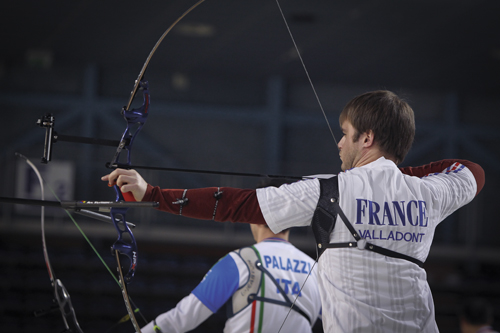
A couple of quick exercises will help you determine your best foot position, and help keep your front arm in line with the target
Fuzzy String: Sometimes when we shoot we think we are aiming in the right place, but actually we are pointing the arrow to the left or right, resulting in the sight pin being too far out or too far in (though this could also be down to the wrong spine of arrow shafts).
The ‘fuzzy string’ is commonly known as the string picture, and there is a lot of advice as to where this should be. I call it the fuzzy string because if you have the target in focus, for the majority of people the sight pin and string cannot also be in focus.
Position your feet correctly as in the exercise above, and repeat the same actions as before. However, this time when you open your eyes take a note of the position of the string on the bow. This is your natural string picture, which should be easy to replicate from shot to shot.
Back tension and a good reference point: Most archers will likely have a vague idea of what back tension is, but might struggle to know if they experience it. This simple exercise as shown will allow you to feel good back tension. Another clue to tell if you are using your biceps to pull the string back is that your elbow will not be in line with the arrow, and will stick out. The reason we use the back muscles is because they are bigger than the biceps, and take longer to tire.
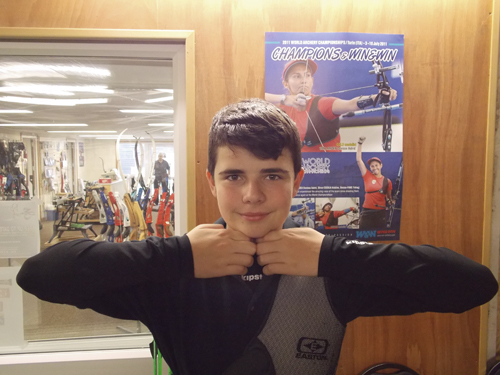
This demonstration exercise shows what using the back muscles really feels like, opposed to using the arms to pull the string back
Always have the string touching the tip of the nose: For better sight marks and less left and right arrows, make sure your drawing hand is under the chin, not halfway up the side of the face, and that the string touches the tip of your nose. This second point gives you a positive reference point from shot to shot and reduces those frustrating left and right arrows.
Tilt at the waist: Modern carbon arrows and bows mean that we no longer have to aim so high to get our arrows to hit 90m. The angles are much shallower, but as a result of this many people tend to raise the bow arm to put the pin on the gold. Unfortunately, this puts your whole shoulder and bow alignment out of line and shortens your draw, a reason why many struggle with a clicker at the longer distances. So to keep the line, just tilt from the waist, being careful not to push your hips forward.
Arrows: Your arrows might not be the most exciting to look at, but they are the most important piece of kit to get right. After all, they are the only piece of your equipment that lands in the target. It is important to be measured up correctly and to get arrows that are matched to you and your bow. Anything less, and shots will be deflected off line more often, resulting in lower scores.
Archery is, at its heart, a very simple sport, and open to all kinds of people. I hope I have encouraged people to see that if you can get the basics right, you can start to develop and make progress without having to invest countless hours or a lot of money.


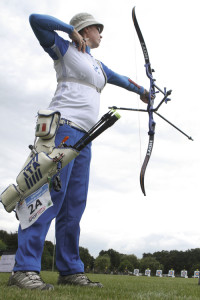
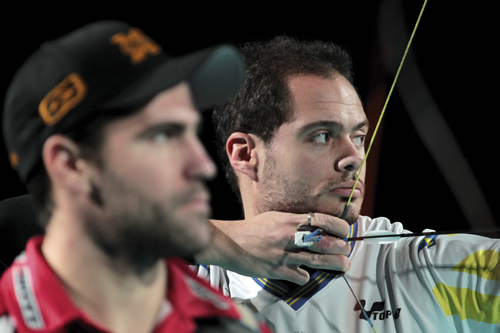
Great article, I will be trying the stance trick tonight.
Such small, simple, changes to technique that will make a world of difference to consistency. Thank you.